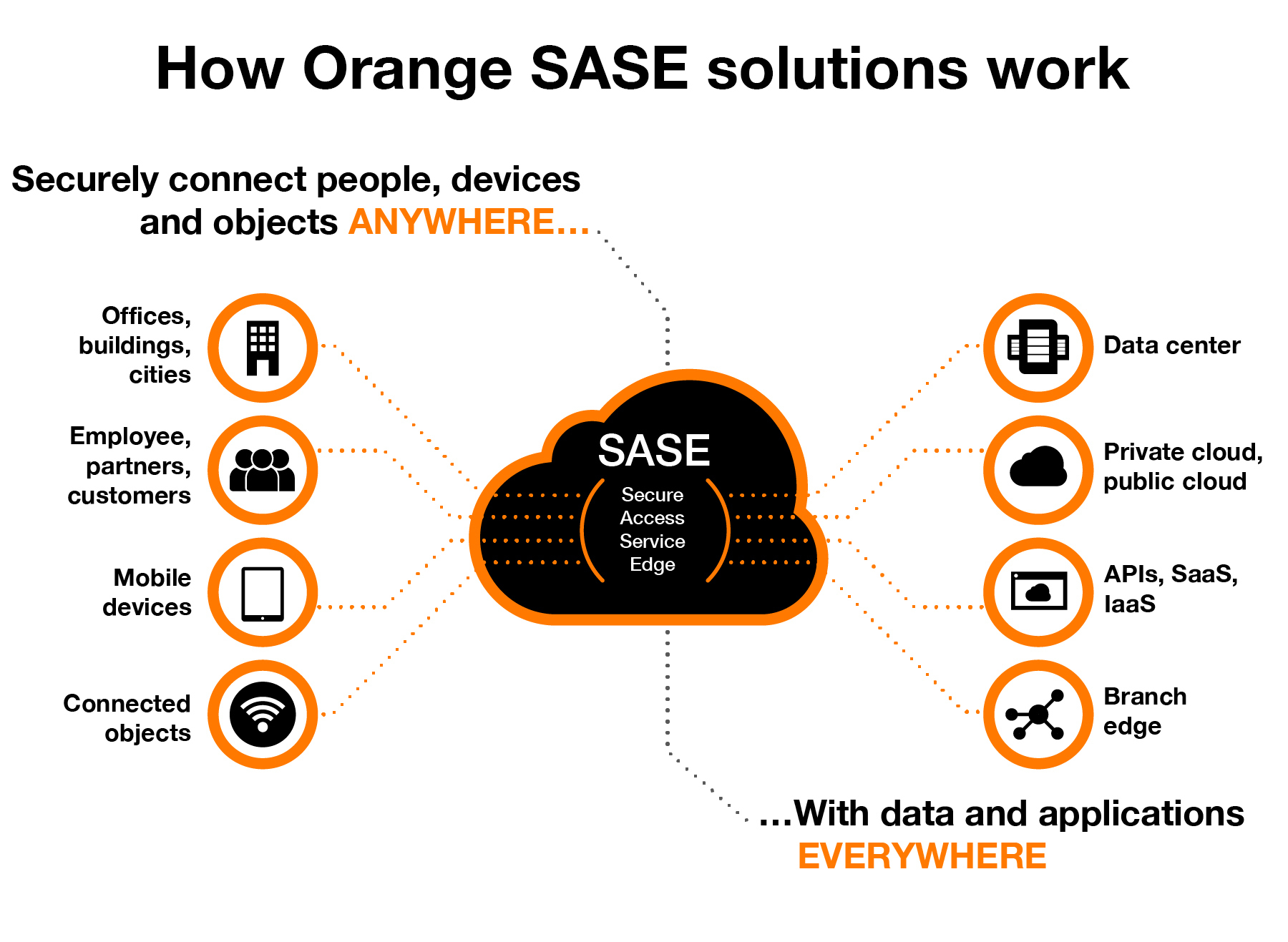Secure Access Service Edge (SASE) continues to generate headlines as a disruptive new networking and security architecture. You’ve likely already heard some of the main talking points: SASE isn’t a product, it’s a concept, it’s a reference architecture; SASE will become the new normal within a few years; and finally, that SASE is a journey – it takes time and planning to adopt this framework, step by step.
What you may not realize, however, is that you’re probably on a SASE journey already, even if you haven’t formalized SASE planning.
But do you need to be on a SASE journey?
SASE should be on your organization’s radar because the nature of work has fundamentally changed. People are the new perimeter. Hybrid and remote workers need secure access to data and applications from anywhere, and the traditional network security model – with an on-premises data center at the core – simply cannot support this new paradigm, exposing your organization to inefficiencies and risk.
Your security should evolve to become more software-defined and cloud-based, as Gartner recommends. You should simplify and converge as many networking and network security functions in the cloud as possible. That’s SASE in a nutshell, and by adopting this architecture, you’ll mitigate security risks, minimize complexity, reduce latency and improve application performance.

At a high level, a SASE journey takes an organization from a traditional data center/edge-based networking model to a cloud-based architecture where networking and security converge, as depicted above.
The SASE model is gaining traction quickly. Gartner predicts that by 2024, 30% of enterprises will adopt most of the five SASE building blocks from the same vendor, including secure web gateway (SWG), cloud access security broker (CASB), zero-trust network access (ZTNA) and firewall as a service (FWaaS). By 2025, says Gartner, more than 60% of enterprises will have specific SASE strategies and timelines in place.
Seven signs that you’re on a SASE journey
Moving to SASE is essentially about accelerating – and securing – your journey to the cloud. Even before Gartner coined the phrase “SASE” in 2019, organizations were already adopting SASE elements as a natural course of their IT evolution: decentralizing their networks, moving applications and data to the cloud.
But the SASE vision goes further. It purposefully converges the primary networking and security components, with the ultimate goal of integrating them as a single, simplified cloud service. Few organizations are close to achieving that goal, yet most of them are somewhere on the path, having adopted one or more of these seven components.
Your organization is definitely on a SASE journey if at least one of these statements is true:
- SD-WAN: You have fully or partially adopted a flexible software-defined wide-area network (SD-WAN) solution
- Zero trust: You are pursuing zero-trust security strategies, recognizing their critical importance in hybrid work environments
- Vendor consolidation: As contracts come up for renewal, you are consolidating vendors and moving away from a patchwork approach
- Cloud-based security: Instead of perimeter-based hardware and VPNs, you are deploying a cloud-native security service
- Security policy: You are streamlining security policy and applying consistent enforcement regardless of location
- User experience: You are improving the visibility of traffic and application – within and beyond your own network
- Integration: You are embedding edge security into network designs and improving networking and security team collaboration
Beware of SASE hype and misconceptions
Unfortunately, the concept of a SASE journey is rife with misconceptions, so let’s push back on two of the biggest:
- SASE isn’t a one-size-fits-all journey: The journey to SASE, including its starting and ending points, will look different for each organization, based on its business goals, security policies, and existing IT investments. A SASE model doesn’t require you to embrace technologies that don’t fit your requirements. Read more from our partner Cisco in “realize SASE your way.”
- SASE should be prioritized, but not rushed: Transition to a SASE architecture will require careful planning, with a migration strategy that will likely take several years to implement. Be wary of any SASE sales pitch that pushes you to abandon existing IT investments or offers a SASE vendor solution that isn’t fully mature.
Determine where you are in the SASE journey and plan your next steps
Ready to move forward on SASE? The most important first step is to undertake an assessment of your environment to establish a baseline for your SASE journey. Consider the seven components listed above as a starting point. Your SASE journey begins from wherever you are – with a well-considered plan to adopt each of the solution components, one by one, in whatever order makes the most sense for your organization.
The journey to SASE is not a one-size-fits-all approach and you don’t want to go it alone. It's important to work with a solution integrator like Orange that can identify where you are on your SASE journey and propose the best solution tailored to your organization’s needs.
Read more in our eBook: Orange guide to SASE design and deployment.

John Isch
Learn more
Energize the digital work environment
To increase productivity, facilitate collaboration and attract talent, we help you define, deploy and maintain your sustainable Digital Workplace solution.
Secure the enterprise
As a leading security services provider, Orange Cyberdefense strives to build a safer digital society. We embed security into Orange Business solutions for multinationals worldwide.